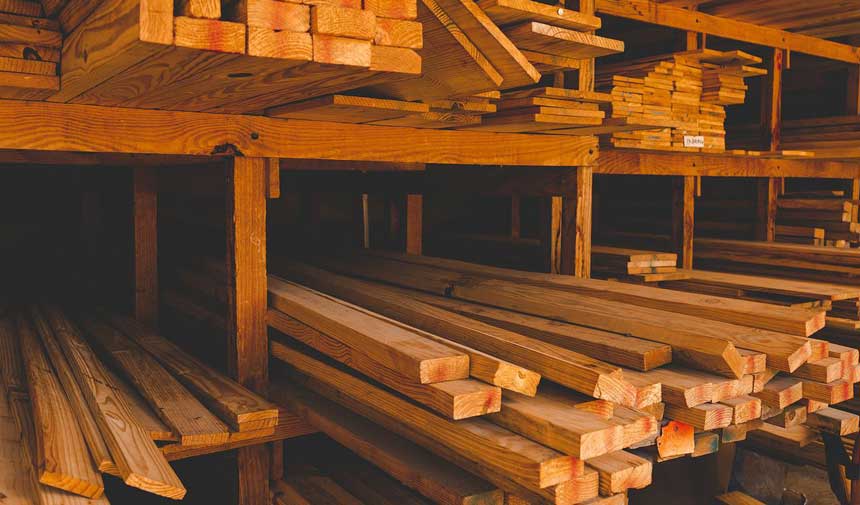Wood cutting boards are special among cutlery experts because of their environment-friendly nature and cost-effectiveness compared to plastic, glass, and granite cutting. But that does not mean every wood type counts as the best wood for cutting board. Some wood species handle the job of cutting and chopping better than others.
So, what is the wood for a cutting board? Here is our review of some of the types of wood that are the best choices for your cutting board.
Maple Lumber Boards
This durable wood has set the benchmark for making wood cutting boards because of its incredible features that are hard to meet in any other wood type.
But first, you should need to know about some important factors for selecting the best cutting board wood.
Things to consider:
Janka Hardness rating
Whether cutting the meat or chopping vegetables, we regularly use a cutting board. Thus the cutting board must be hard enough that you can regularly use it for daily cooking. The wood must be scratch resistant and durable with a higher Janka rating. The higher the Janka rating, the more reliable and durable the wood board would be.
However, wood with an extremely high Janka rating can cause your knife to get dull in a very short period. So, choose wood with a rating from 900 to 1500 Janka.

Toxicity
Like plastic, wood can also cause various health issues if not handled properly. You would be surprised to know that wood can cause asthma, dermatitis, decreased lung function, rhinitis, and eczema only by absorbing the toxic chemicals in the wood by the skin, lungs, or digestive system.
Thus, make sure to choose food-safe wood such as those that produce edible fruits, leaves, nuts, or saps. Don’t choose exotic wood as they contain high quantities of toxic chemicals that can harm your health. [1]
Porosity
The porosity of the wood is another critical factor that you should not neglect when selecting a wood cutting board. If the wood is highly porous (open-grained wood), it will not work less than a sponge that absorbs moisture and becomes a breeding point for mold, wood warping, and stains.
On the contrary, closed-grain wood prevents moisture or bacteria from entering the wood and thus resists mold growth and staining.
Conditioning
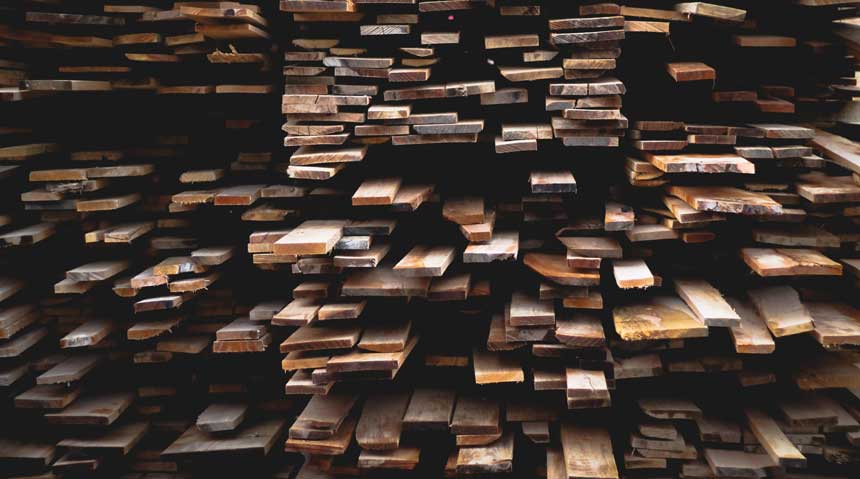
Another important factor is the conditioning of the wood. Conditioning includes coating the wood with food-grade mineral oil to suppress the natural tendency of wood to shrink or split when the surrounding humidity decreases.
Should you choose a cherry end grain cutting board? Check this guide to know more.
So, it would be best if you bought a conditioned wood cutting board; else you have to do it by yourself.
Cost
Cost also matters the most, whatever you’re trying to buy. The price of the wood cutting board entirely depends on the quality and type of wood. Size and other factors such as porosity, conditioning, and Janka hardness rating also affect the price.
Top 6 Best Wood for Cutting Board
| Image | Name | Name | |
|---|---|---|---|
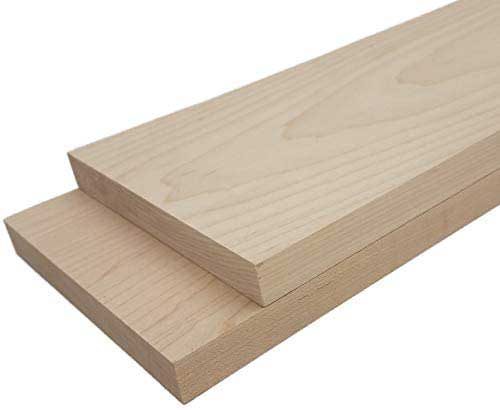
|
Maple Lumber Boards |
|
 see on amazon
see on amazon
|
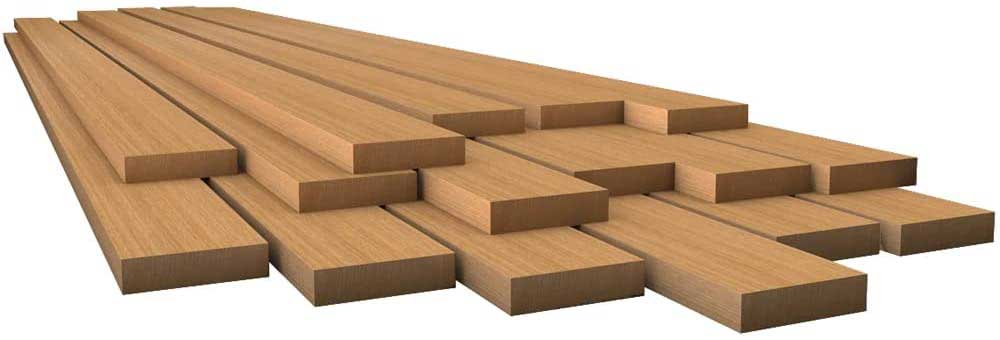
|
Teak Lumber |
|
 see on amazon
see on amazon
|
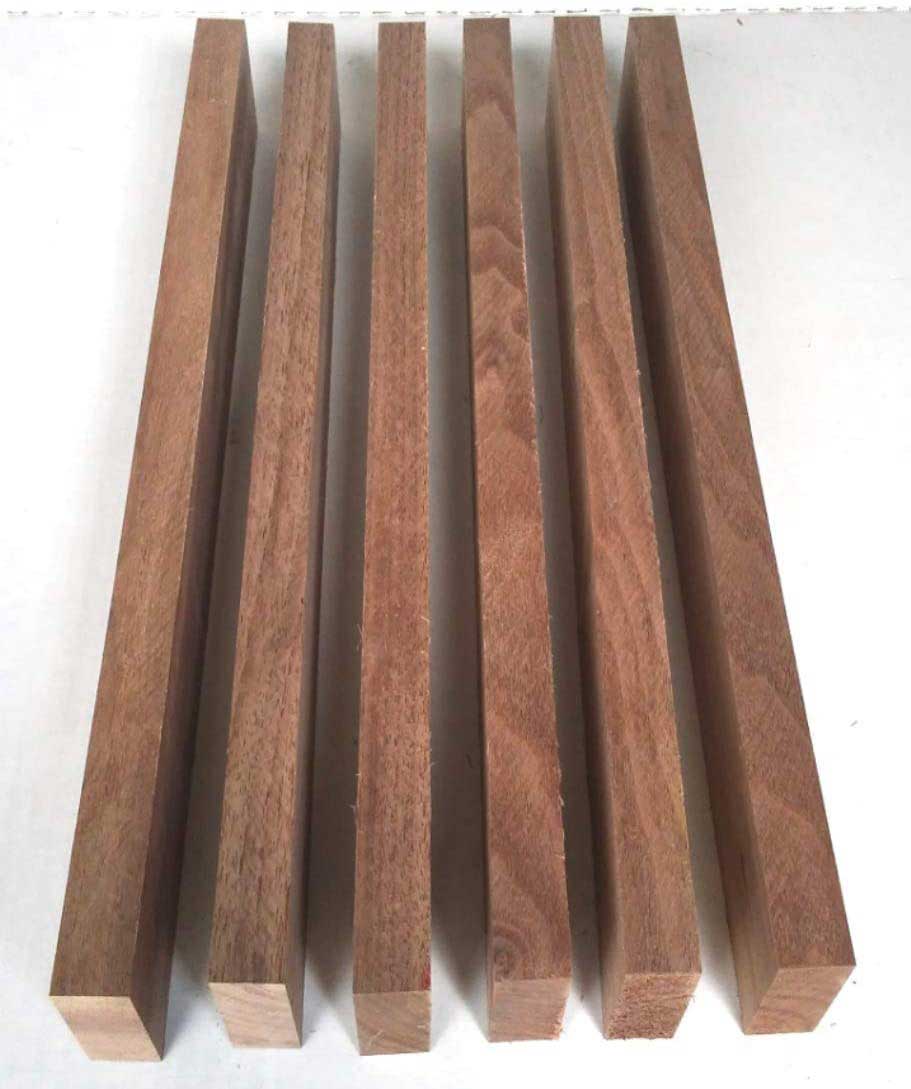
|
Walnut Solid Hardwood Lumber |
|
 see on amazon
see on amazon
|
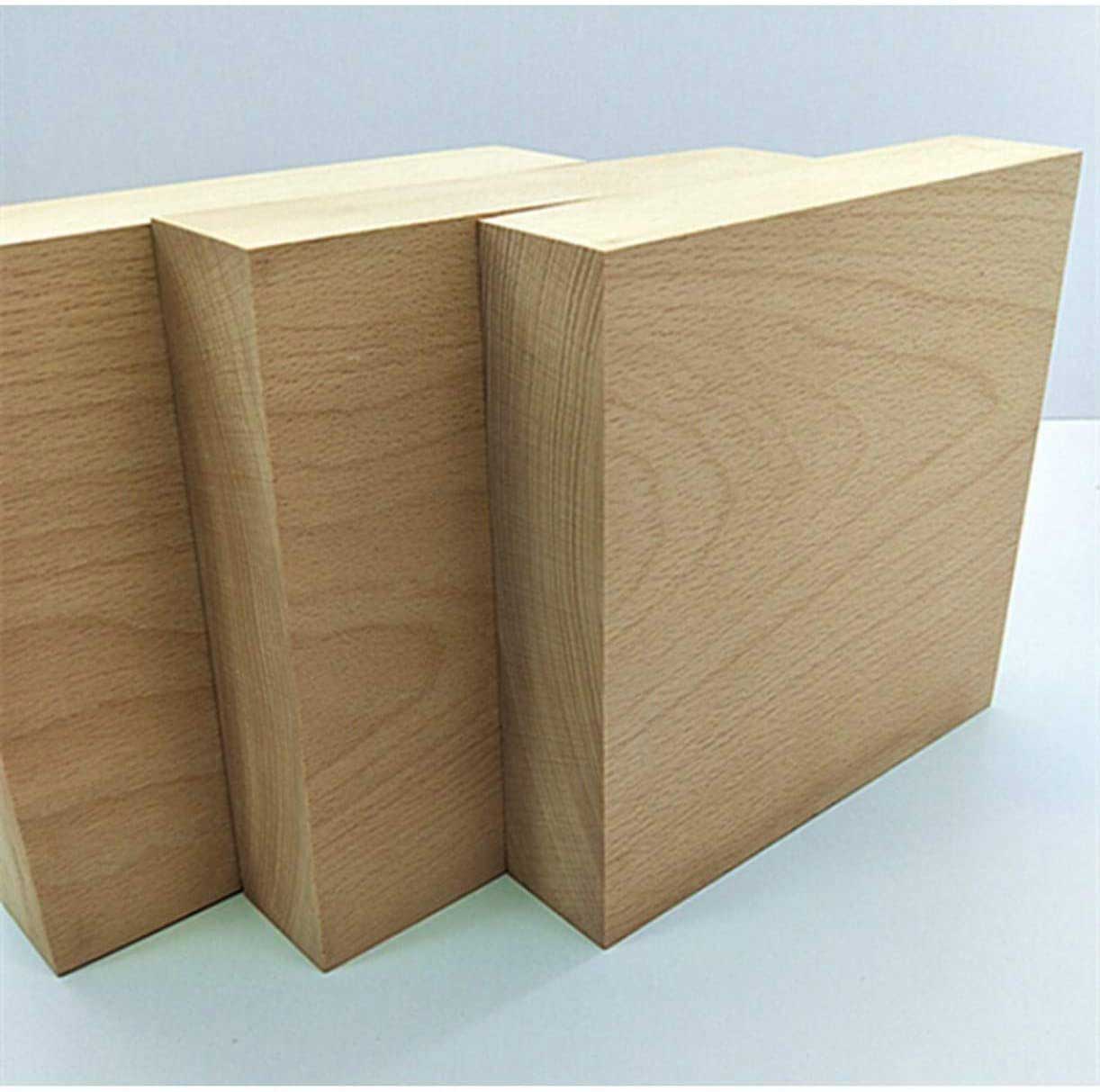
|
Beech Wood Carving Blocks |
|
 see on amazon
see on amazon
|
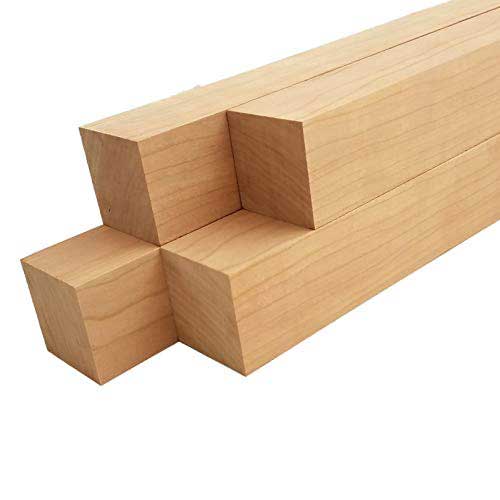
|
Cherry Lumber Square |
|
 see on amazon
see on amazon
|
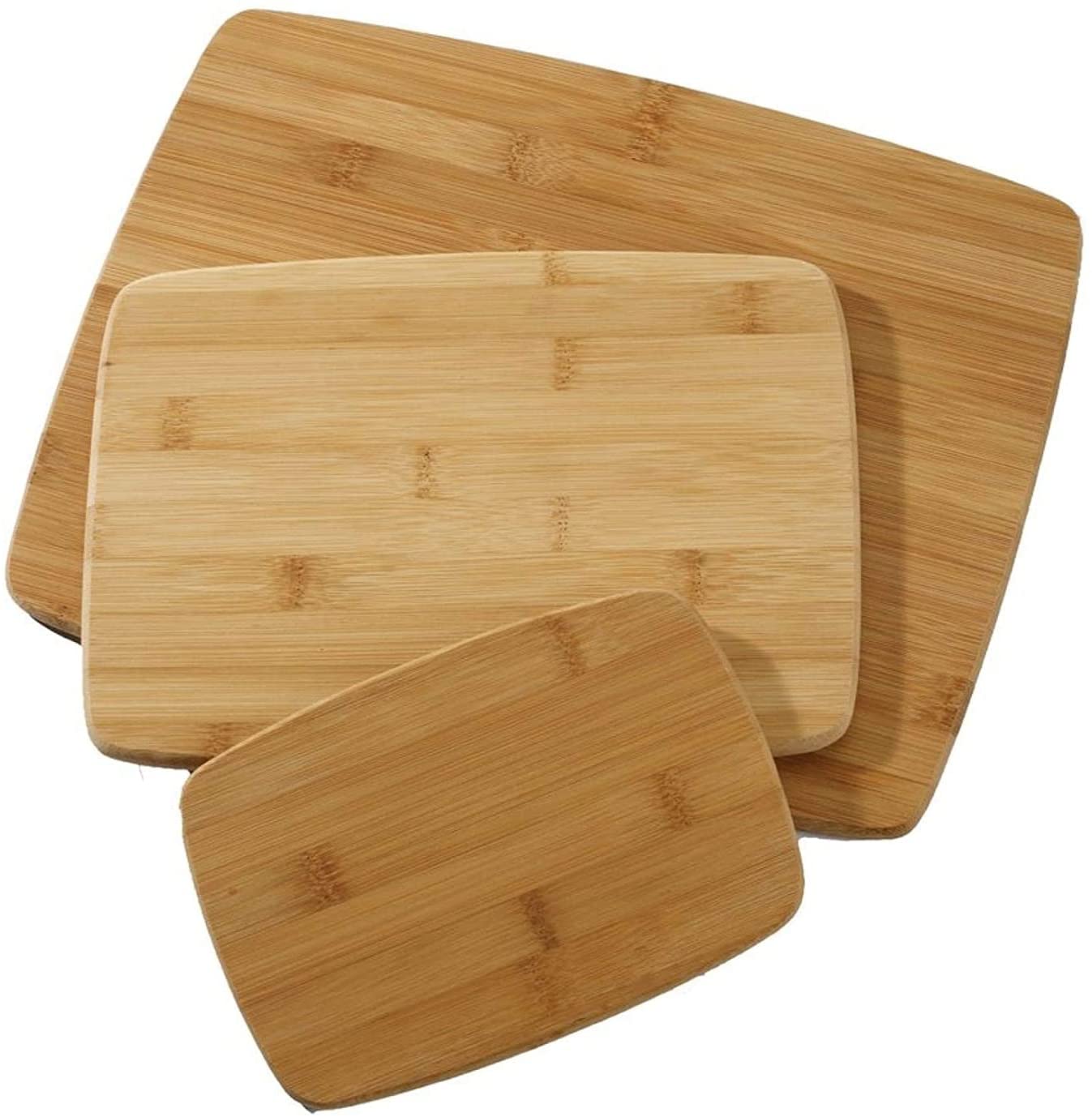
|
Farverware Bamboo Cutting Board |
|
 SEE ON AMAZON
SEE ON AMAZON
|
Now you know the main factors to keep in mind while buying the wood for the cutting board, here are some of the wood recommendations we have for you. Let’s have a look at each of them!
1. Maple Lumber Boards (Top Pick)
Specifications
Material: Maple
- Janka hardness rating: 1450 lfb
- Color: Off-white to amber-yellow
Maple is our top pick for the best wood for cutting boards, both quality and price. This durable wood has set the benchmark for making wood cutting boards because of its incredible features that are hard to meet in any other wood type. It meets nearly all the standards for the best wood type mentioned above. What’s more, the beautiful color texture and subtle grain make it a perfect fit for all types of kitchen decor.
It has a Janka hardness rating of 1450 Janka, making it hard enough to resist denting and soft enough to prevent your knives from getting dull. It also produces edible fruits such as samsara which is highly nutritious and packed with important protein and carbohydrates. This means your wood cutting board is free from harmful toxins for your health.
Additionally, it is sufficiently dense with a closed-end grain pattern which means no bacteria or dirt build-up in the wood. Also, it prevents the absorption of liquid and moisture. However, it gets stained easily if you chop vegetables or coriander like turmeric roots or fresh beets frequently on your maple cutting board. Thus, you need to carefully consider what you’re chopping on the cutting board and condition it regularly.
2. Teak Lumber
Specifications
Material: Teak
- Janka hardness rating: 1115 lfb
- Color: Brownish color
Undoubtedly, Teak is one of the most popular woods for cutting boards because of its high oil content and excellent Janka rating. Unlike Maple, Teaks have larger oil content, making it efficient moisture repellent and thus preventing your wood cutting board from rooting. That’s why it is widely used for making cutting boards, boats, furniture, yachts, and exterior designing.
Not only is it highly water-resistant, but also hard enough to prevent scratches on the wood. But it has a downside: a certain quantity of silica adds more toughness to the wood and causes the knives to get dull after frequent use.
However, it is more resistant to shrinking than maple wood, so you do not need frequent conditioning. But again, it has a large pore size that makes it more vulnerable to developing bacteria, dirt, and mold than the other wood on our list. Also, it is expensive as compared to others.
3. Walnut Solid Hardwood Lumber (Budget Opion)
Specifications
Material: Walnut
- Janka hardness rating: 1010 lfb
- Color: yellow to rich, deep brown
If you’re looking for a more cost-friendly option, no one is better than the Walnut wood. It is one of the softest woods on our list; that’s why many people wonder whether it is a good fit for a wood cutting board. It can be an excellent choice for making a wood cutting board as it has the just-right amount of hardness that is required for a cutting board.
However, It has an average Janka hardness rating of 1010, which makes it more prone to scratching and denting than Maple. But with good care, you can prevent it from scratching and denting even after frequent usage.
The main advantage of using walnut for cutting boards is the small porosity that makes it an excellent water repellent and prevents bacterial or mold growth and dirt build-up.
It is also food safe without any impurities or harmful chemicals. At the same time, the rich deep brown color gives your countertop an elegant yet classic look.
4. Beech Wood Carving Blocks
Specifications
Material: Beech
- Janka hardness rating: 1300 lfb
- Color: Reddish brown
After Maple, this is the second wood type with most of the above-mentioned features. It is an excellent choice for making wood cutting boards with an excellent Janka rating of 1300 LFB on the Janka hardness scale. Which means it is highly scratch and dent resistant.
Also, you don’t need to worry about breaking the cutting board even if you fall from a certain height. This also makes it the ideal wood for making the best cutting board for meat.[2]
This is not the only advantage of the Beechwood; it also has an excellent dense wood grain pattern that makes it an ideal water repellent. As a result, you can fearlessly use the cutting board without the fear of building dirt or bacterial growth. Also, it makes the cutting board easy to clean and more user-friendly. But the light color makes the stain visible.
However, they have little oil content and thus shrink more easily than other wood types; thus, you need to regularly condition them with quality mineral oil. But they are highly affordable than other wood types.
5. Cherry Lumber Square
Specifications
Material: Cherry
- Janka hardness rating: 950 lfb
- Color: Light pink to rich reddish-brown
If you’re looking for a more radiant and stylish wood type for your cutting board, then cherry is the best choice as it has light pink to rich reddish-brown color. But if talking about hardness, it would be the worst choice as it is softer wood with a Janka rating of only 950 lfb. It can easily get dents or scratches, but your knives will not get dull even after frequent use.
However, it still has an advantage due to its high oil content, which requires less conditioning and maintenance than high-quality maple wood.
But since you wanted to have a cherry wood cutting board only for looks, a combination of Maple and cherry wood cutting board can be an excellent finish for durability and style. [3]
6. Farverware Bamboo Cutting Board
Specifications
Material: Bamboo
- Janka hardness rating: 1380 lfb
- Color: natural color
For a more environmentally friendly choice, even Maple wood can’t beat Bamboo. Technically speaking, it is not wood, merely hard grass, but it can be an excellent choice for making a healthy wood cutting board.
Bamboo has an excellent Janaka rating of 1380 lfb, making it the hardest wood that can’t break or get scratched.
It also has silica, which means no water or moisture absorption or bacteria build-up.
Also, it is renewable, sustainable, and needs no chemicals to grow; thus, it doesn’t have any toxicity at all. But it would be hard on your knives as they will easily get dull. [4]
Conclusion
So, that was all the top quality wood types that can account as best cutting board material. They all have excellent features and can make highly durable and user-friendly wood cutting boards that can be a good fit for your kitchen.
Our top pick for best wood for cutting board material is Maple Lumber Boards. It is highly durable and has most of its features. But if you’re looking for a more budget-friendly option walnut is the best choice.
However, you can also combine these wood types to make a more exquisite and convenient cutting board that will surely stand out in the crowd.
FAQs
Since cutting meat requires force; thus a heavier and thicker wood can be an excellent choice for making a cutting board.
Thus, Maple and Beech are ideal options for this job as both wood types are tougher and hard with a high Janka rating. Also, they have a dense porosity, thus preventing the meat juice from being absorbed by the wood.
As mentioned above, the healthiest wood for cutting boards is the one that has a dense pore size to prevent bacteria growth and dirt build-up.
Plus, that produces edible fruit and is less harmful to human health. All the above-mentioned wood types produce edible fruit and make healthy wood cutting boards.
Unfortunately, Oak isn’t a good option for making cutting boards as it has a large pore size and holds bacteria, dirt, and moisture.
It can also easily get scratches and dents.
Reference
- Toxicity retrieved from: https://www.bobvila.com/articles/best-wood-for-cutting-board/
- Beech is retrieved from: https://viebelles.co/blogs/care/the-best-wood-for-cutting-boards?shpxid=168eb4a5-9fa2-4531-96f8-a5b1ac636424
- Cherry is retrieved from: https://crafteddollar.com/ranking-the-best-wood-for-cutting-boards/
- Bamboo is retrieved from: https://misen.com/blogs/news/best-wood-for-cutting-board


